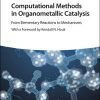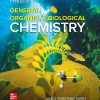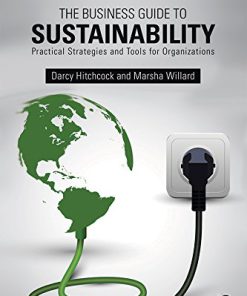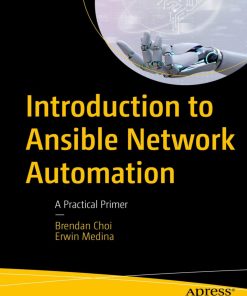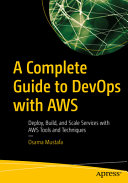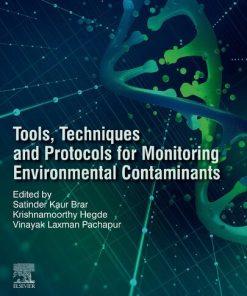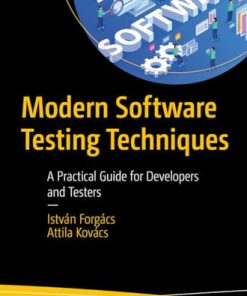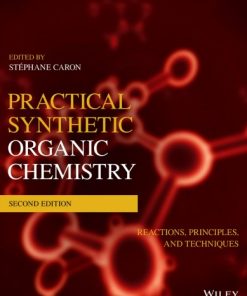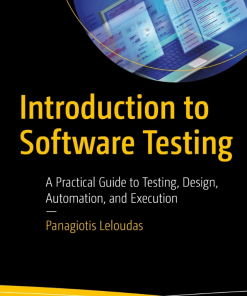Enabling Tools and Techniques for Organic Synthesis A Practical Guide to Experimentation, Automation, and Computation 1st edition by Stephen Newman 1119855644 9781119855644
$50.00 Original price was: $50.00.$25.00Current price is: $25.00.
Enabling Tools and Techniques for Organic Synthesis: A Practical Guide to Experimentation, Automation, and Computation 1st edition by Stephen G. Newman – Ebook PDF Instant Download/DeliveryISBN: 1119855644, 9781119855644
Full download Enabling Tools and Techniques for Organic Synthesis: A Practical Guide to Experimentation, Automation, and Computation 1st edition after payment.
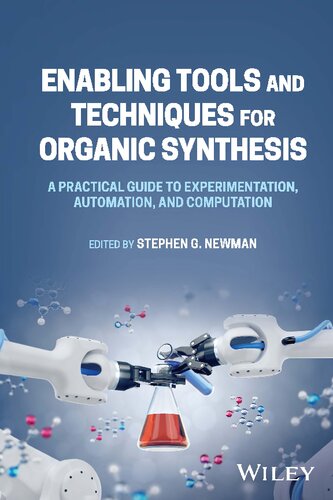
Product details:
ISBN-10 : 1119855644
ISBN-13 : 9781119855644
Author : Stephen G. Newman
ENABLING TOOLS AND TECHNIQUES FOR ORGANIC SYNTHESIS
Provides the practical knowledge of how new technologies impact organic synthesis, enabling the reader to understand literature, evaluate different techniques, and solve synthetic challenges
In recent years, new technologies have impacted organic chemistry to the point that they are no longer the sole domain of dedicated specialists. Computational chemistry, for example, can now be used by organic chemists to help predict outcomes, understand selectivity, and decipher mechanisms. To be prepared to solve various synthetic problems, it is increasingly important for chemists to familiarize themselves with a range of current and emerging tools and techniques.
Enabling Tools and Techniques for Organic Synthesis: A Practical Guide to Experimentation, Automation, and Computation 1st Table of contents:
1 Biocatalysis 101 – A Chemist’s Guide to Starting Biocatalysis
1.1 Introduction
1.2 When Should I Choose an Enzyme over a Chemical Catalyst?
1.3 Key Considerations for Running Biocatalytic Reactions
1.4 Transformations Catalyzed by Enzymes
1.5 New Trends and Technologies in Biocatalysis
1.6 Flow Chart to Biocatalysis
1.17 Case Study: Setting up a Biotransformation
1.8 Concluding Remarks
Additional Resources
References
2 Introduction to Photochemistry for the Synthetic Chemist
2.1 Introduction
2.2 How to Plan a Photochemical Synthesis
2.3 Selected Applications of Photochemical/Photocatalyzed Reactions
2.4 Conclusions
Acknowledgment
References
3 How to Confidently Become an Electrosynthetic Practitioner
3.1 Introduction
3.2 General Definition of Organic Electrosynthesis
3.3 Why is Organic Electrosynthesis Used?
3.4 How is Organic Electrosynthesis Performed?
3.5 Where to Start with Electrosynthesis?
3.6 Electrasyn 2.0
3.7 Case Study
3.8 Conclusion
References
4 Flow Chemistry
4.1 Introduction
4.2 General Information for Flow Microreactors
4.3 Case Studies
4.4 Further Expertise
4.5 Summary and Outlook
References
5 Reaction Optimization Using Design of Experiments
5.1 Introduction
5.2 When and How Can DoE Be Used?
5.3 What Information Can I Get from a DoE and How Is It Obtained?
5.4 What Types of Design Are Available?
5.5 The DoE Process
5.6 Combining DoE with Other Screening and Optimization Techniques
5.7 Software
5.8 “I Tried Experimental Design But It Did Not Work”
5.9 Conclusion
References
6 Introduction to High‐Throughput Experimentation (HTE) for the Synthetic Chemist
6.1 What Is HTE?
6.2 Why HTE and What Can It Achieve?
6.3 Practical Considerations and Tools for HTE
6.4 Section Summary and Outlook
6.5 Case Study 1: Development of an HTE Platform for Nickel‐Catalyzed Suzuki–Miyaura Reactions
6.6 Case Study 2: HTE Enabled Reaction Discovery and Optimization of Silyl‐Triflate‐Mediated C–H Aminoalkylation of Azoles
6.7 Current Challenges and the Future of HTE
Acknowledgments
Further Recommended Reading
References
7 Concepts and Practical Aspects of Computational Chemistry
7.1 Introduction
7.2 Hardware and Software Requirements for Computational Investigations
7.3 Typical Methods in Computational Organic Chemistry
7.4 Basis Sets Used in Computational Organic Chemistry
7.5 Typical Computational Tasks in Organic Chemistry
7.6 Notation of the Model Chemistry
7.7 The Diels–Alder Reaction as a Tutorial Case Study
7.8 More Advanced Aspects
7.9 Important and Frequently Used Keywords
7.10 Practical Considerations
7.11 Conclusions
References
8 NMR Prediction with Computational Chemistry
8.1 Introduction
8.2 Quantum‐Chemistry‐Based Computational NMR
8.3 Summary and Outlook
Key References
References
9 Introduction to Programming for the Organic Chemist
9.1 Introduction
9.2 Better Visualizations: Communicating Structure–Data Relationships
9.3 Text Extraction: Automating Density Functional Theory Calculations
9.4 Statistical Analysis: Deriving Insight from Historical Data
9.5 Machine Learning: A Predictive Model for Deoxyfluorination
9.6 Working with Public Datasets: Identifying Reactivity Cliffs
9.7 Running Simulations: Process Greenness
9.8 Application Development: Process Mass Intensity Predictor
9.9 Machine Learning for Reaction Optimization
9.10 Executing Robotic Tasks
9.11 Autonomous Reaction Optimization
9.12 Conclusion
References
10 Machine Learning for the Optimization of Chemical Reaction Conditions
10.1 Introduction
10.2 Prior Art and Alternative Methods for Rational Reaction Optimization
10.3 Reaction Optimization Using LabMate.ML
10.4 Primer on Evaluation Guidelines
10.5 Outlook
References
11 Computer‐Assisted Synthesis Planning
11.1 Introduction to Computer‐Aided Synthesis Planning
11.2 Approaches and Algorithms for Retrosynthesis
11.3 Approaches and Algorithms for Condition Recommendation and Forward Synthesis
11.4 Select Examples of Software Tools for CASP
11.5 Case Studies
11.6 Conclusion
People also search for Enabling Tools and Techniques for Organic Synthesis: A Practical Guide to Experimentation, Automation, and Computation 1st:
enabling tool
enabling technology definition
enabling technologies examples
enabling techniques
enabling technique
Tags: Enabling Tools, Techniques, Organic Synthesis, Practical Guide, Experimentation, Automation, Computation, Stephen Newman
You may also like…
Uncategorized
Computers - Networking
Introduction to Ansible Network Automation: A Practical Primer
Computers - Networking
Computers - Enterprise Computing Systems
Computers - Programming
Modern Software Testing Techniques: A Practical Guide for Developers and Testers 1st Edition
Chemistry - Organic Chemistry
Practical Synthetic Organic Chemistry – Reactions, Principles, and Techniques 2nd Edition
Computers - Programming


